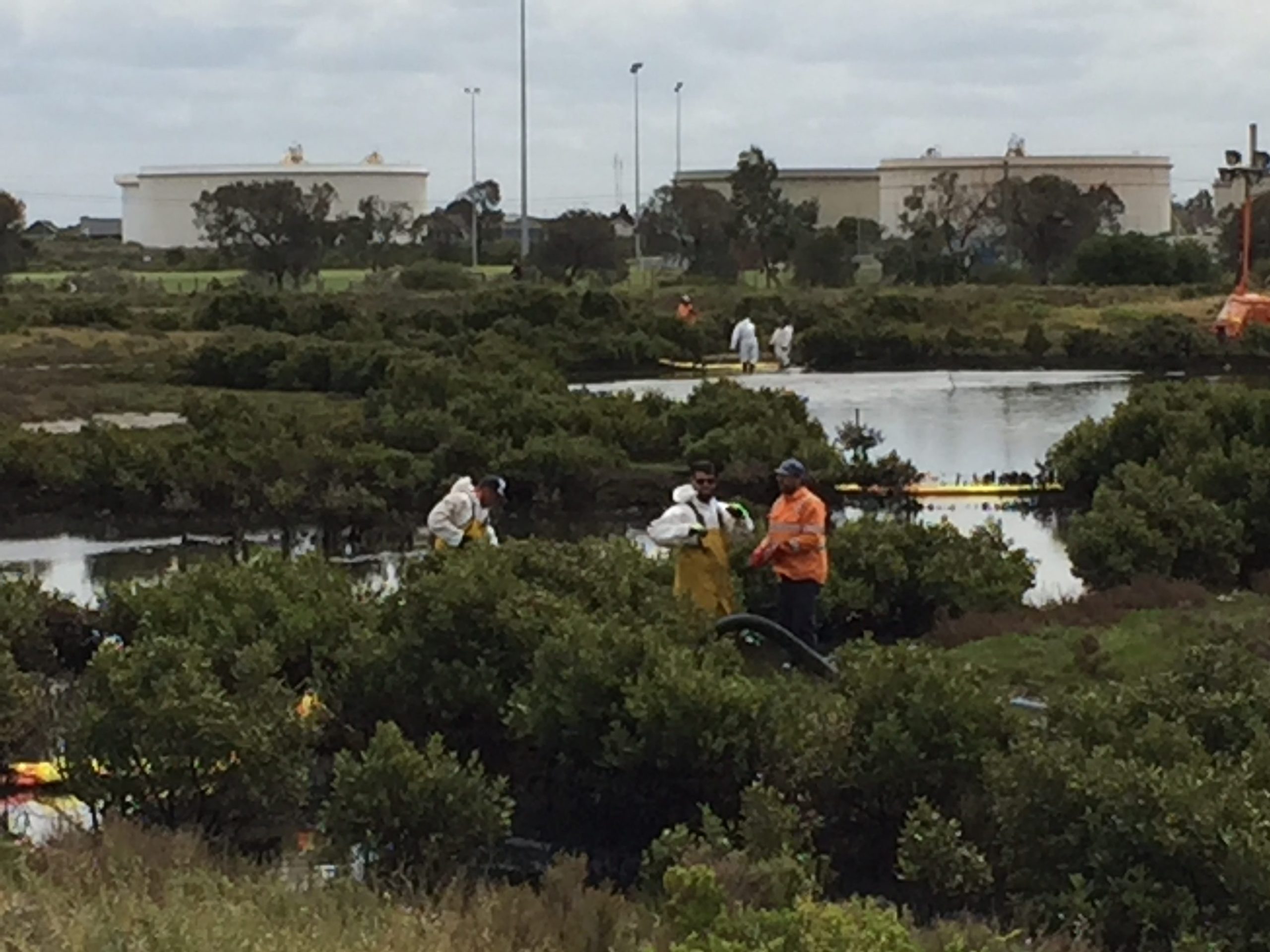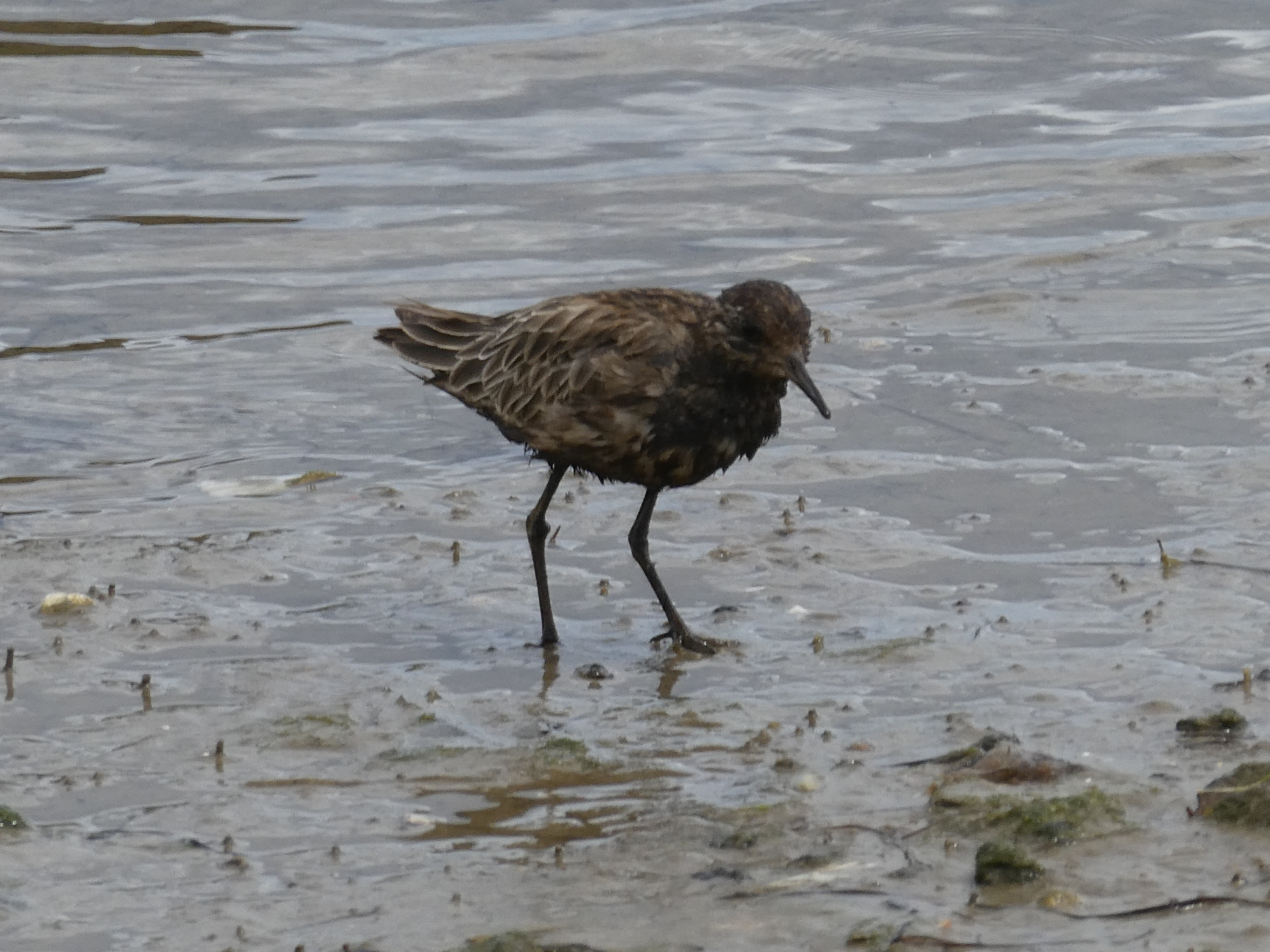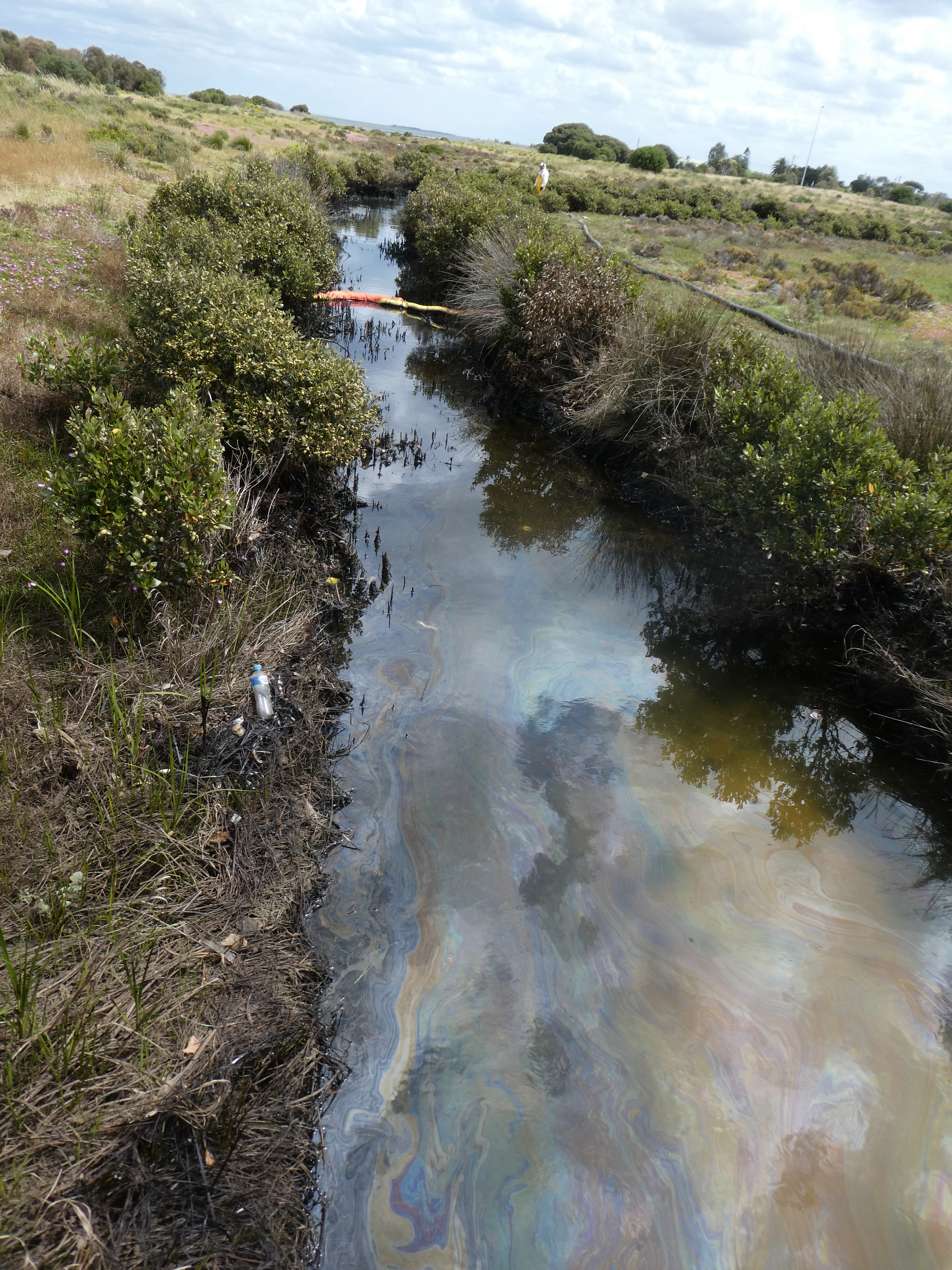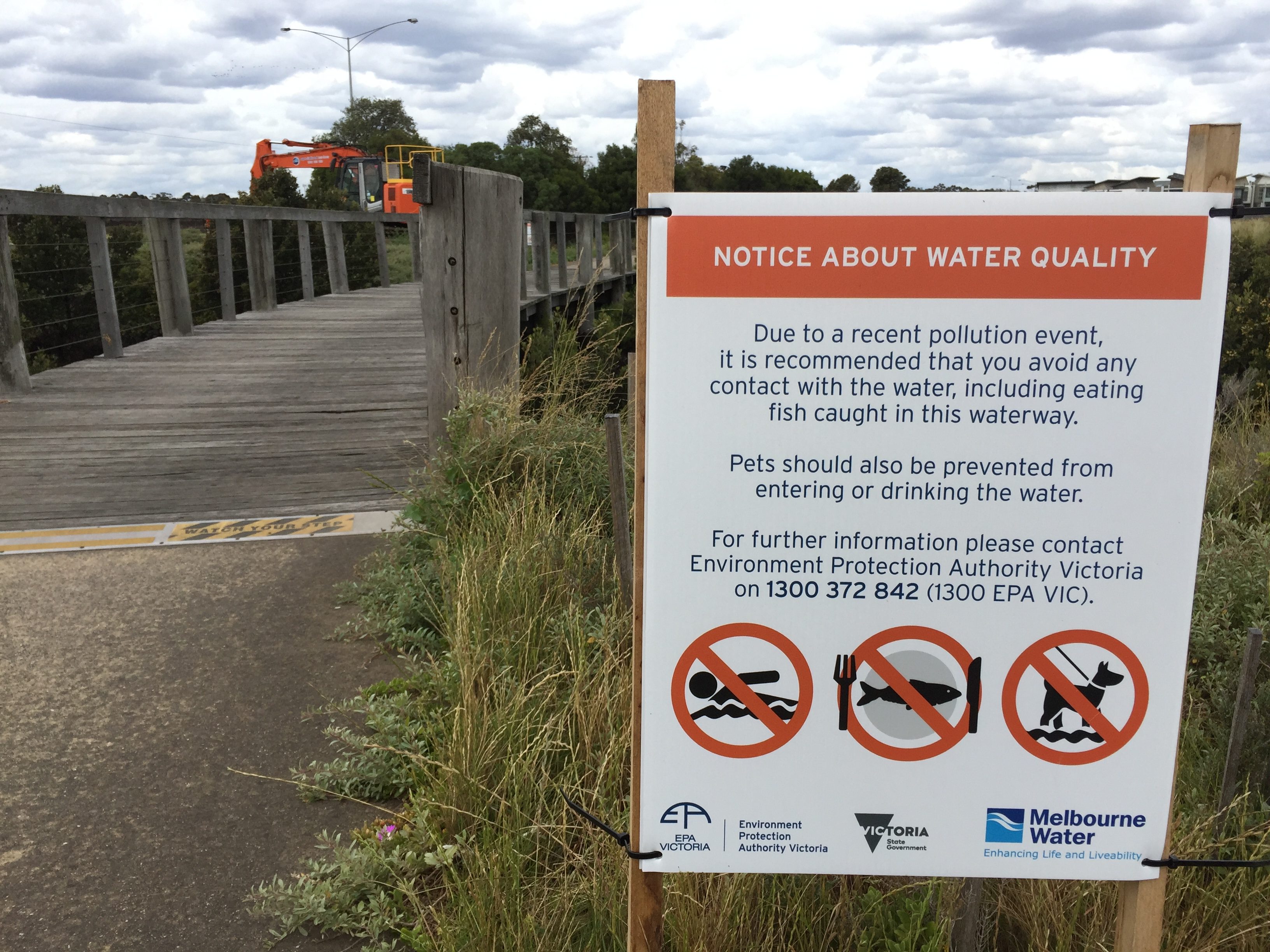By Goya Dmytryshchak
Authorities have warned it could take weeks to mop up an oil spill that has polluted Williamstown waterways, affected wildlife and spread into Port Phillip Bay.
The Environment Protection Authority has identified Boral Resources, a national supplier of asphalt and other road materials, as a potential source of the pollution.
Parks Victoria confirmed the pollution, which started in Paisley-Challis Wetlands at Williamstown, had impacted Jawbone Marine Sanctuary in the bay.
“The impacts include a thin layer of oily residue along approximately 400 metres of the shoreline at the high tide mark within the marine sanctuary,“ a spokesman said.
“To date we have observed a number of birds with some oiling of plumage but all are actively flying and feeding.“

Melbourne Water used an excavator, booms and vacuum trucks to try to stop the pollution spreading, with the Department of Transport’s marine pollution team providing back-up.
EPA’s western metropolitan manager Stephen Lansdell said Boral was assisting with the clean-up.
“EPA is continuing to investigate the cause and hold those responsible to account,“ he said.
“While further scientific analysis is underway, a nearby business, Boral Resources (Vic) Pty Ltd, has been identified as a potential source and is assisting authorities with ongoing clean-up.
“The agencies are confident they have stemmed the flow of the pollutant, and arrangements have been put in place to deal with expected rainfall,“ he said.
“Members of the public are advised to avoid contact with water in the affected waterways.“

Hobsons Bay Wetlands Centre chair, environmental scientist Marilyn Olliff, has photographed the oil spill and a sharp-tailed sandpiper wader bird with oil in its feathers.
“It’s such a sad day when we see wildlife affected by pollution,“ Dr Olliff said.
“It looks like some oil reached the bay before the booms were put in place, before the pollution was discovered, which is how the bird would have been affected externally.
“These migratory birds need to feed almost constantly to regain weight after their long flight, and to store up energy for the return flight next autumn.“
Dr Olliff said the spill could affect many birds in the area, including migratory birds who come from as far as Alaska and Siberia.
“They eat small invertebrates picked out of the mud or sand,“ she said.
“The oiled bird was walking around and appeared to be feeding normally.
“Oil on the surface around the mouth of the drain would mean that when the birds peck into the mud to feed, they would be taking in some oil as well as food.
“This would result in problems for all the birds in this area even if they didn’t get oil on their feathers.”

A Boral spokesman confirmed the company was “co-operating“ with the EPA in the clean-up.“
“The source of the contaminant, which the EPA believes to be an oil-based substance, has not yet been confirmed,“ he said.
“We understand that the EPA’s investigation is ongoing.
“Boral will continue to co-operate with the EPA and other relevant authorities.“
A Melbourne Water spokeswoman said further clean-up may last several weeks.













